What could the 18th-century and the 21st-century possibly have in common? Two things: a love of knowledge, and a love of takings things apart to see how they work. See Things Come Apart and Jefferson & Diderot blogs.
The Encyclopédie gathered current knowledge in written essays and illustrations to make it available beyond aristocrats and scholars.

A side-by-side comparison; left, an illustration from the 1765 edition of the Encyclopédie on Clockmaking. Right; a dismantled clock from the current exhibition at Cedarhurst, the Smithsonian’s Things Come Apart.
In the exhibition currently at Cedarhurst, February 27 – May 2, the Smithsonian has done much of the same thing. The exhibition features the photography of Todd McLellan who loves taking things apart.

“Clockmaking” The Encyclopedia of Diderot & d’Alembert Collaborative Translation Project. Ann Arbor: Michigan Publishing, University of Michigan Library, 2020. From l’Encyclopédie ou Dictionnaire raisonné des sciences, des arts et des métiers, vol. 4 (plates). Paris, 1765. All illustrations courtesy of University of Michigan Library.
McLellan disassembles to teach himself how things work and by doing so gains a greater respect for the work and craftsmanship that went into it. McLellan encourages the wise use of our limited resources.
Other messages from the exhibit include showing kids how to use power tools to make their own creations, ending planned obsolescence, and most important of all, repair it, don’t throw it away.

What the Encyclopédie strove to achieve, what the Smithsonian strives for in making knowledge accessible, is also what art museums, like Cedarhurst, strive to achieve everyday, making art and knowledge accessible to the communities we serve.





